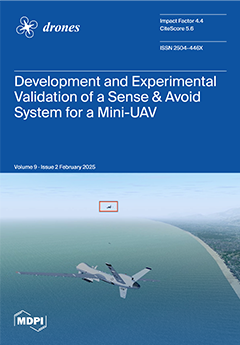The development of unmanned aerial spraying systems (UASSs) has significantly transformed pest and disease control methods of crop plants. Precisely adjusting pesticide application rates based on the target conditions is an effective method to improve pesticide use efficiency. In orchard spraying, the structural characteristics of the canopy are crucial for guiding the pesticide application system to adjust spraying parameters. This study selected mango trees as the research sample and evaluated the differences between UAV aerial photography with a Structure from Motion (SfM) algorithm and airborne LiDAR in the results of extracting canopy parameters. The maximum canopy height, canopy projection area, and canopy volume parameters were extracted from the canopy height model of SfM (
) and the canopy height model of LiDAR (
) by grids with the same width as the planting rows (5.0 m) and 14 different heights (0.2 m, 0.3 m, 0.4 m, 0.5 m, 0.6 m, 0.8 m, 1.0 m, 2.0 m, 3.0 m, 4.0 m, 5.0 m, 6.0 m, 8.0 m, and 10.0 m), respectively. Linear regression equations were used to fit the canopy parameters obtained from different sensors. The correlation was evaluated using
and
, and a
t-test (α = 0.05) was employed to assess the significance of the differences. The results show that as the grid height increases, the
values for the maximum canopy height, projection area, and canopy volume extracted from
and
increase, while the
values decrease. When the grid height is 10.0 m, the
for the maximum canopy height extracted from the two models is
, with an
of
. For the canopy projection area, the
is 97.83%, with an
of 0.01, and for the canopy volume, the
is 98.35%, with an
of 0.0337. When the grid height exceeds 1.0 m, the
t-test results for the three parameters are all greater than 0.05, accepting the hypothesis that there is no significant difference in the canopy parameters obtained by the two sensors. Additionally, using the coordinates
of the intersection of the linear regression equation and
as a reference,
tends to overestimate lower canopy maximum height and projection area, and underestimate higher canopy maximum height and projection area compared to
. This to some extent reflects that the surface of
is smoother. This study demonstrates the effectiveness of extracting canopy parameters to guide UASS systems for variable-rate spraying based on UAV oblique photography combined with the SfM algorithm.
Full article





